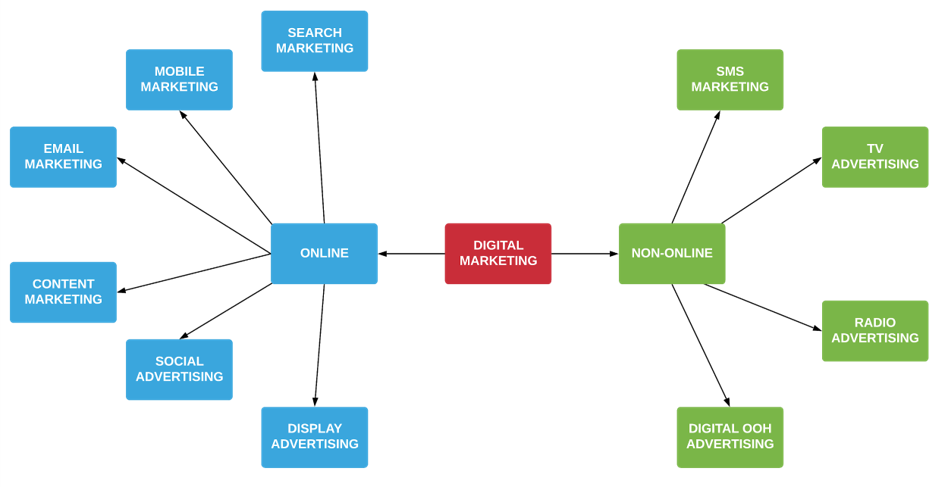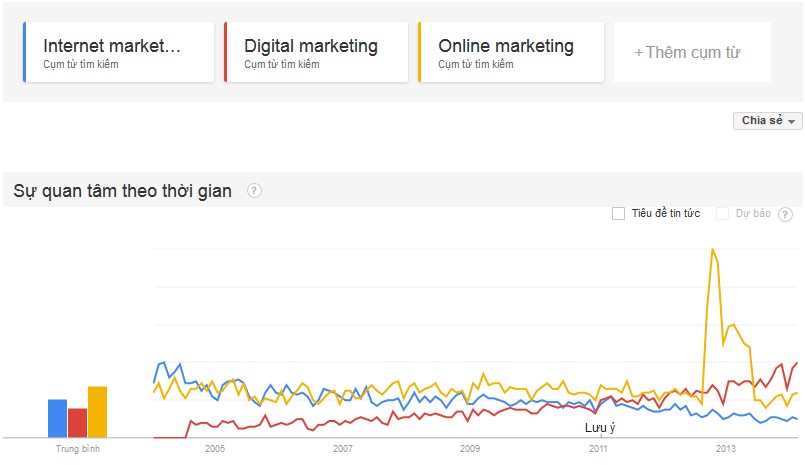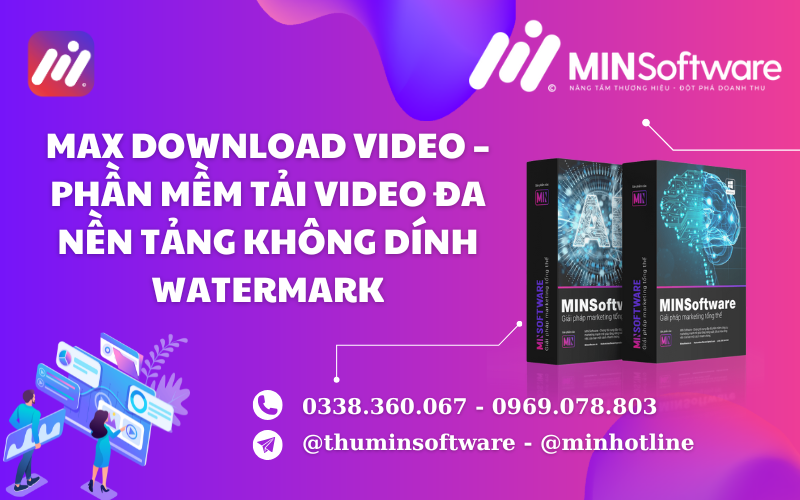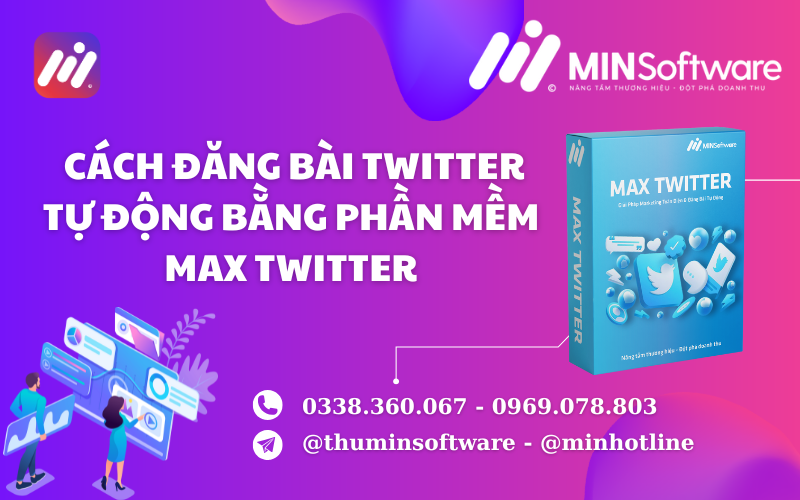Main Content
What is Digital Marketing?
Nowadays, you will often hear words like Digital Marketing, Internet Marketing or Online Marketing floating around the internet and many people use these words as synonyms and interchangeable. But in fact, Digital Marketing is a more comprehensive phrase and Online Marketing (or Internet Marketing) is just a part of Digital Marketing. So what exactly is Digital Marketing? Here is the definition from Wikipedia:
Digital marketing is marketing that makes use of electronic devices (computers) such as personal computers, smartphones, cellphones, tablets and game consoles to engage with stakeholders. Digital marketing applies technologies or platforms such as websites, e-mail, apps (classic and mobile) and social networks. – Wikipedia
“Digital Marketing is an advertising method that uses electronic devices such as personal computers, smartphones, mobile phones, tablets, and gaming devices to interact with users. Digital Marketing uses technologies or platforms such as websites, email, applications (both native and mobile), and social networks.”
We are talking about definitions and depending on each person, there will be different definitions and understandings of what Digital Marketing is. But for me, Digital Marketing is divided into 2 very separate and clear parts: Online Marketing (or Internet Marketing) and Non-online Marketing:

As you can see in the graphic above, Online Marketing / Internet Marketing as its name implies includes advertising channels that require an internet connection, while Non-online Advertising is mainly advertising methods in which you do not need an internet connection. We will have time to go deeper into each type of advertising in the upcoming articles, but within the limits of this article, we will stop at summarizing these types of advertising.
Online Marketing / Internet Marketing
Search Marketing (SEO & SEM): paid advertising on search engines like Google, Yahoo and Bing (SEM) and website optimization to achieve higher rankings in search engine organic search results (SEO).
Mobile Marketing: advertising through mobile devices which can include optimizing apps for better display on app stores (app store optimization – ASO), push advertising, display within apps to encourage users to install.
Email Marketing: Advertising by sending emails to customers in a list or database and introducing them to services, products or news updates. Learn more about email marketing.
Content Marketing: advertising method by creating content on all platforms that has the ability to create good interactions and attract users and thereby increase traffic or encourage value creation.
Social Marketing: advertise and convey messages to users through social networks such as Facebook, Twitter, LinkedIn to create value, revenue or increase brand awareness.
Display: Programmatic advertising through platforms (publishers, ad networks, ad exchanges, DSPs) with the form of displaying formats such as images, videos, html on websites and applications in the supplier's system. Learn more about display advertising.
Non-online Marketing
SMS: Advertising via SMS messages on mobile phones. Only brandname SMS messages (customer care and advertising) are counted.
TV / Radio: advertising on television and radio channels.
Digital Out-of-Home (OOH): Outdoor advertising in electronic format such as LCD displays (buildings, airports and outdoors), electronic signs, etc.
What is the difference between online marketing and non-online marketing?
Below are 3 basic differences between online marketing and non-online marketing channels:

The difference comes from 3 angles:
1. Measurement:
Online marketing is easier and more effective to measure with the help of measurement tools (Google Analytics for example). You can know exactly how many clicks come from which channel, how long customers stay on the website, which page they leave the website on and whether they buy or not. Note that I only said online marketing is easier to measure, not more accurate measurement – see more: Google Analytics And Why It's Inaccurate.
With non-online marketing channels, it is not so easy because they do not rely on a website or the internet and are therefore harder to measure (similar to outdoor and traditional channels). For example, you cannot know how many people read your message when you send SMS and how many of them make a purchase afterwards.
2. Method of operation:
Online marketing channels depend on the internet (of course). Without the internet, there is no online marketing, that’s all.
Non-online marketing channels do not depend on the internet but depend on telecommunications infrastructure (television waves, radio waves, telephone waves, etc.) and therefore they still work with or without the internet.
3. Purpose of use:
There are 2 main purposes when doing advertising: 1 is to increase conversion (sales, registration, etc.), 2 is to increase brand awareness.
Online marketing has the advantage of increasing conversions because it is easily measurable, allowing for quick optimization and improvement of campaign performance even while it is running.
See also: How to Optimize Advertising More Effectively.
Non-online marketing has the advantage of helping to increase brand awareness because of its wide reach.
See also: Online Brand Management Process
Note that saying that does not mean that online marketing channels will not be able to increase brand awareness or vice versa, non-online marketing channels cannot increase conversions. And it does not mean that brand awareness does not help sell more products or vice versa. What I want to say here is that each channel has its own strengths and depending on the purpose, marketers need to use it correctly.
Boundaries are blurring due to the development of technology
But now the boundaries between these words are also gradually blurring with the development of technology and the internet. Phones have gradually become pocket computers, TVs can also connect to the internet and access the network, can scan radio waves. Anyone can connect to the internet anywhere with the popularity of 3G/4G, wifi. At this time, what is the difference between advertising via SMS and Push Message for users? If the TV connects to the network and receives advertising emails, is it email marketing or advertising via TV? There are many things that can be argued, but it can be seen that the boundaries between the two types of components in Digital Marketing are actually not completely separate.
Another question that arises now is if so, which word should we use to be more precise? For example, Online Marketing and Internet Marketing, which word is more acceptable? To understand this better, we can look at the chart from Google Trends showing the popularity of these keywords from 2004 to present:
View Google Trends chart – here.
We can see that the keyword Digital Marketing is becoming more and more popular and used, showing us that the general trend is to combine advertising from different channels to bring higher efficiency. The keyword online marketing is still popular and there was a jump in 2013 showing us that the interest in this topic has increased recently. The keyword Internet Marketing is gradually decreasing in popularity compared to the other two words, perhaps because the word "online" is more specific than the word "internet" when combined with "marketing". This is the reason why I decided to use "Digital Marketing" as the name of the folder instead of Internet Marketing or Online Marketing because the content written on this blog will be about using a combination of digital tools, not just online.


















